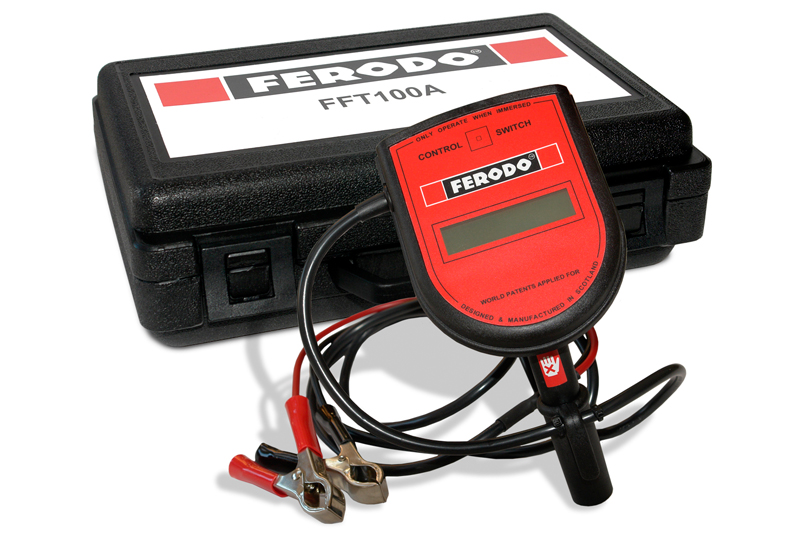
Brake fluid needs to be replaced every two years, in compliance with manufacturers’ recommendations, regardless of vehicle use. However, there are special new testers that allow accurate fluid checks on top of this, ensuring braking safety. PMM finds out more from Ferodo, a brand of Federal-Mogul.
For repair professionals, brake fluid is one of the easiest parts of a vehicle’s braking system to replace, yet is one of the most often overlooked. Over time, drivers can become accustomed to sub-optimal brake performance, which leads to neglect of the entire system. Drivers may forget to replace brake fluid, which can present an opportunity for mechanics. Replacement intervals should not be solely mileage-based (replacement is usually suggested every 40,000-80,000km), but age-based. It is advised that an inspection be performed every two years due to the fluid’s tendency to absorb moisture, which in turn affects its performance. Low-cost pen testers are not reliable, as they mostly analyse the condition of the brake fluid by measuring its conductivity. So, what can be done?
Ferodo performed benchmarking tests on a range of brake fluids, and results confirmed compromised performance in some fluids due to instability – especially at hot and cold temperature extremes. The fluid can become too thin at elevated temperatures and almost at a ‘solid’ state in cold temperatures. Furthermore, the lower quality fluids were found to be highly acidic, which can degrade metal and rubber components within braking system components.
The right tool
Ferodo’s Brake Fluid Tester checks the health status of brake fluid easily and provides, in less than a minute, an accurate digital measure of the boiling point temperature of the brake fluid, unlike alternative systems that measure the temperature indirectly through electrical conductivity. Conductivity testers prove to be a low-accuracy, relatively unreliable method of measuring brake fluid, which may compromise the safety-critical braking system.
Comply with DOT number recommended by the manufacturer
Replacement intervals are dictated by the fluid’s hygroscopic quality, which is its tendency to absorb moisture, and possibly caused by a brake hose cracking or by the normal degeneration of the quality of the fluid.
“Under harsh braking, the liquid in contact with the rubber surfaces and the caliper pistons can achieve elevated temperatures of up to 200°C,” explains Jonathan Allen, Regional Marketing Manager. “Due to moisture retention, water vapour is produced, which can be compressed. Therefore, the stroke of the pedal becomes dangerously long, and brake efficiency is worsened. A year is enough for the fluid boiling temperature to decrease by up to 80°C.” For this reason, the minimum boiling points (when new) of the more common fluids are as follows: DOT3 205°C; DOT4 230°C; DOT5.1 260°C. The higher the boiling point, the greater the amount of heat the fluid can handle from the braking system. It should be noted that these are not the threshold temperatures for replacement.
As the DOT number and boiling point increase, the tendency for the fluid to retain moisture also increases – which in turn reduces the boiling point. In the case of DOT5.1, however, it has an advantage in that it better retains its boiling point with proportional moisture increase when compared with other DOT grades. It is recommended that DOT5.1 fluid should be replaced every six months under normal use.










